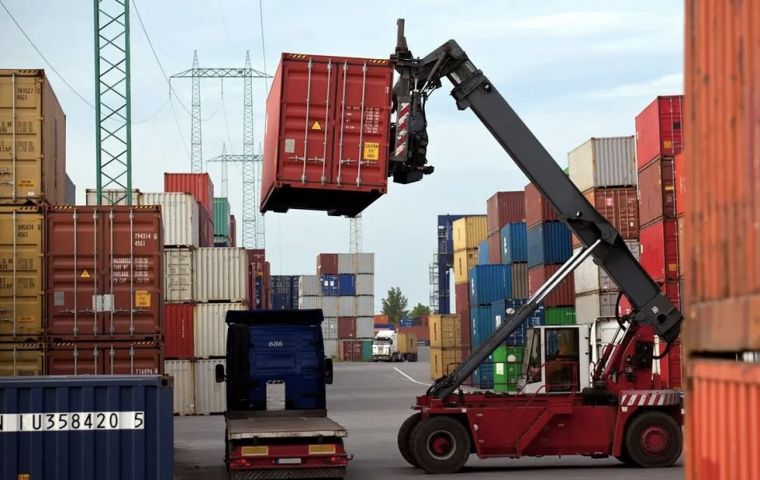MercoPress. South Atlantic News Agency
Brazil's Economy Ministry reports foreign trade surplus in October
 Figures may increase after Chinese customs have cleared the way for Brazilian corn shipments
Figures may increase after Chinese customs have cleared the way for Brazilian corn shipments After Sunday's elections and the nationwide protests by supporters of President Jair Bolsonaro who refuse to admit former leader Luiz Inácio Lula da Silva will be once again head of state on Jan. 1, the Economy Ministry released this week a report showing the country had recorded a trade surplus of US$ 3.921 billion in October alone.
The figure, which stems from deducting the amount spent on imports from the one earned through exports, was 90 % higher than in the same month last year and the third-best result in history for any given October, barely surpassed by those of 2018 and 2020.
So far in 2022, Brazil's trade balance recorded a surplus of US$ 51.64 billion, 11.7 % below that of the first 10 months of last year, but the second-highest record for the same period in history, losing only to 2021.
Exports in October amounted to US$ 27.299 billion, while imports totaled US$ 23.378 billion. Exports rose 27.1 % compared to October 2021 and imports advanced 19.8 % in the same comparison.
Agriculture boosted Brazilian sales abroad with volumes 49.7 % higher than those from October 2021, while the average price rose 24.3 % in the same comparison. Corn, coffee, and soybeans were the main agricultural products traded.
Regarding imports, there were increases in latex and natural rubber (37.6 %), fruits and nuts (21.1 %), and barley (15.8 %) among other items.
The government had lowered its forecast for this year's trade surplus to some US$ 55.4 billion, which, if confirmed, would be the second largest in history, only surpassed by the US$ 61.4 billion surplus recorded last year.
Meanwhile, Chinese customs updated its list of approved Brazilian corn exporters, which heralds higher incomes for the years to come. The new list includes 136 grain-export facilities. The measure might also affect exporters from the United States, the world's largest corn supplier. China currently relies on the United States and Ukraine for its corn supply. China and Brazil signed a protocol in 2014, but there was little movement due to complex inspection requirements. A revised protocol was agreed upon in May, just months after Russia invaded Ukraine in February.




Top Comments
Disclaimer & comment rulesCommenting for this story is now closed.
If you have a Facebook account, become a fan and comment on our Facebook Page!